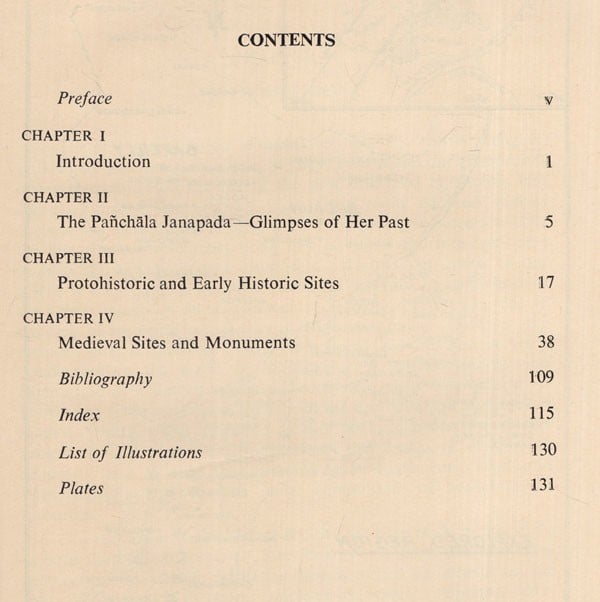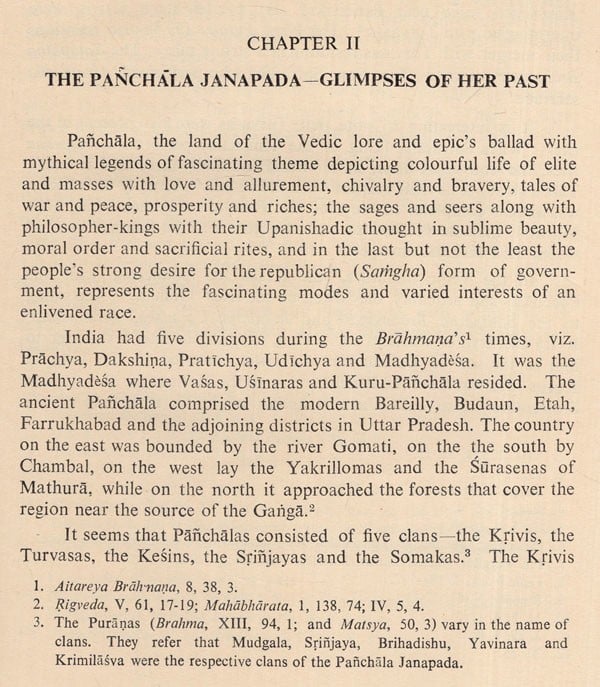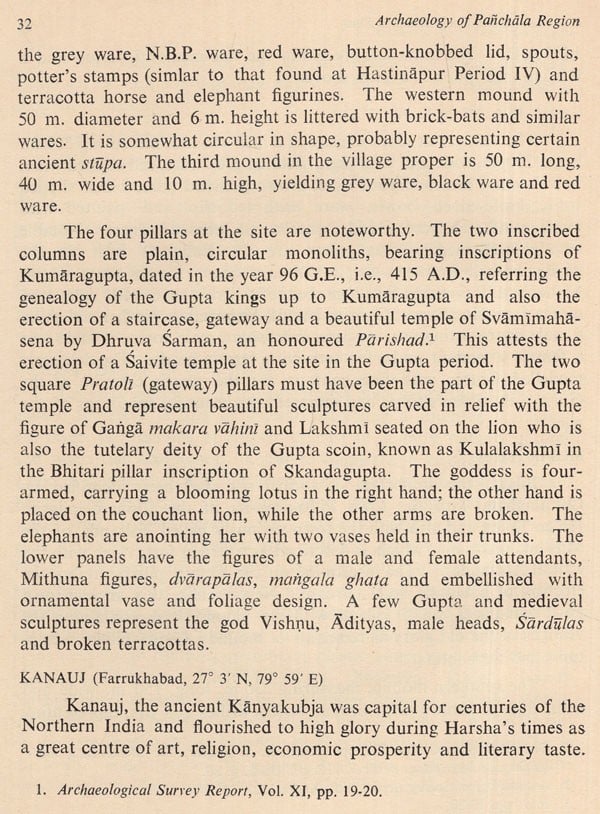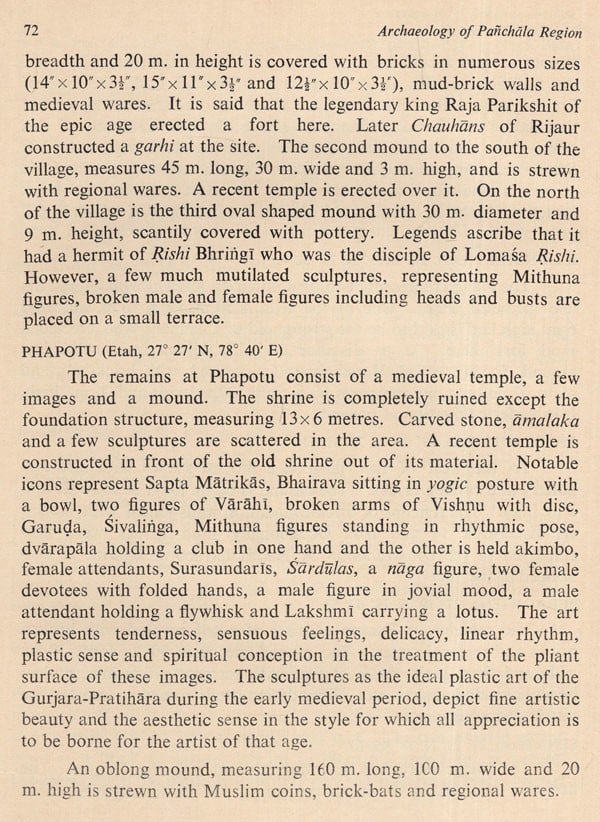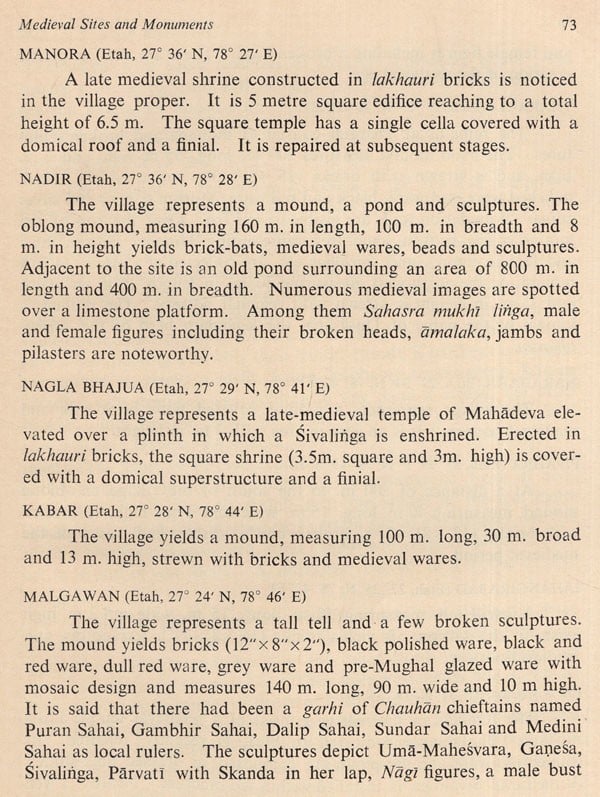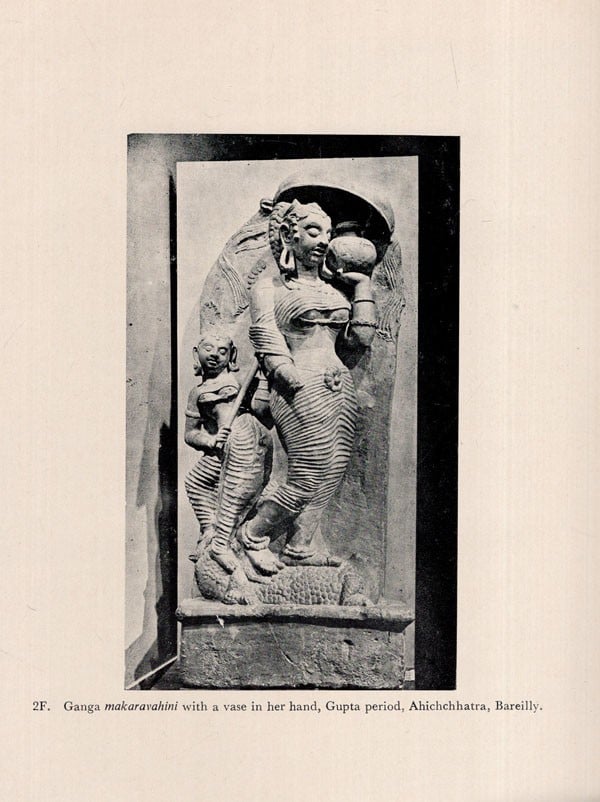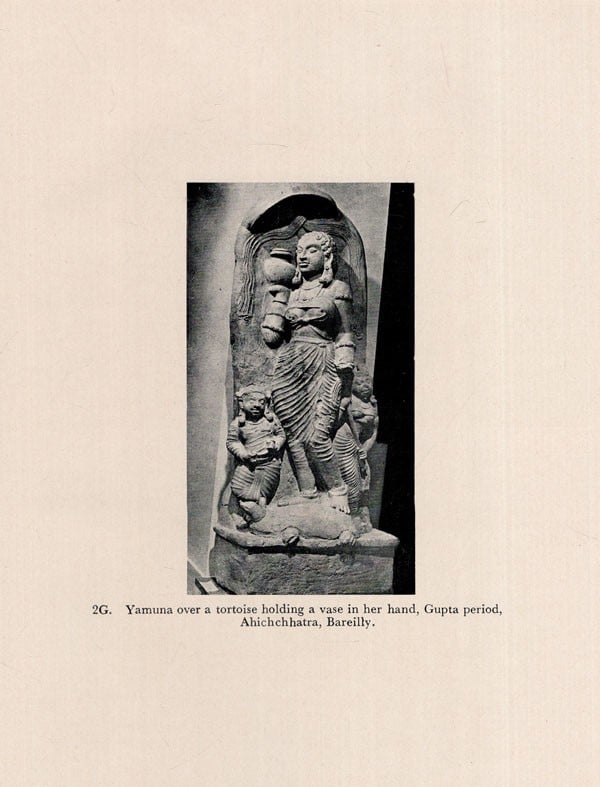
Archaeology of Panchala Region (An Old and Rare Book)
Book Specification
| Item Code: | UAS576 |
| Author: | S.B. Singh |
| Publisher: | Agam Kala Prakashan, Delhi |
| Language: | English |
| Edition: | 1979 |
| Pages: | 160 (Throughout B/w Illustrations) |
| Cover: | HARDCOVER |
| Other Details | 10.00 X 7.50 inch |
| Weight | 600 gm |
Book Description
A unique work on the fascinating ancient panchala Janapada with its rich resources and arch aeological finds, based on extensive explorations, covers about two hundred new sites and monuments ranging from the proto-historic copper-hoards to the late-medieval period, including 1857 upheaval.
Literature, coins, epigraphs, icons and other archaeological finds have all come in forth for fresh identification, critical evaluation and new interpretation, making the bewitching Panchala of the yore whisper its glories vividly to the readers through pages.
Having obtained his Master's degree in the Ancient Indian History and Archaeology from the Lucknow University in 1955, Dr. Sheo Bahadur Singh had a rewarding association with the Archaeological Survey of India spanning well for one and a half decade which enabled him to have a vast experience in the various fields of archaeology. The fact, that during this association with the Survey, the author submitted his Ph.D. thesis in the Lucknow University in 1967 (which earned him a gold medal for the best dissertation) speaks eloquently of his deep erudition in the field. Since 1973, he is engaged in teaching and guiding research to the post-graduate students in the department of Ancient Indian History, Culture and Archaeology at the Kurukshetra University.
Dr. Singh has numerous contributions to his credit. Besides twentyfive research papers in Indian and Foreign Journals, he is also the author of 'The Archaeo logy of the Lucknow Region' 1972 (collaboration), 'Brahmanical Icons in Northern India' 1977, and 'Letters of Sir Henry Montgomery Lawrence' 1978, etc. He is also a member of the All India Oriental Conference, Epigraphical Society of India, the Indian Archaeological Society and other academic bodies.
With its sublime Upanishadic thoughts, Brahmana's rituals and epic tales of war and peace along with rich archaeological potentialities, the Panchala Janapada has always been a source of continuing fascination. The study of the region serves as an essential prerequisite to understanding various cultural trends, artistic activities and religious beliefs of the people in the area in different ages.
The project, financed by the U.G.C., was undertaken with a view to assessing and evaluating the archaeological significance of the region. A total of four years exhaustive labour has gone into the making of the present work. The sites numbering more than two hundred, reported here, have involved extensive explorations reaching remotest nook of the sprawling region. The finds in the reigon have been varied and important, as far as the represent, chronologically speaking, from copper implements to the late-medieval antiquities. Numerous new sites have been discovered for the first time. Fresh identifications, full descriptions and new interpretations have been employed in appraising the antiquities. The finds are critically examined in order to determine their historical significance and many of the opinions expressed here stake a claim to originality. Literature, coins, epigraphs, art objects and other archaeological finds provide the storehouse of material for enabling a peep in the obscure past of the Panchala Janapada. The protohistoric and early historic sites have been discussed at length. The Gupta, medieval and late-medieval sites and monuments have been also discussed in the new light.
The perennial question of what our ancestry, culture, religion, philosophy and socio-economic life have been eludes our understand ing even today. How the men of the past organised themselves into societies, made their artefacts, had their faith, adopted various occupations, passed their leisure time-such problems evermore baffle the historians as researches bring new facts to the surface every time to make the already known insufficient. Archaeology comes to our rescue in meeting these questions, although partially, in the absence of the written annals or other documents of reasonable veracity due to the lack of historical consciousness in ancient India. However, the archaeological research on a local and regional basis remains as yet a desideratum in the world of scholarship. A careful survey and exploration of a limited region will definitely yield rich reward of known and unknown data of archaeological and historical interest. A modest attempt in that direction in this book is made to study the ancient Panchala region. Nonetheless, the scope of enquiry is delimited here to only four districts-Bareilly, Budaun, Etah and Farrukhabad in Uttar Pradesh under compulsions of availability of resources.
An endeavour to the best of abilities has been made in this study to be as thorough as possible. Sites known or hitherto unknown have been carefully discussed, evaluating their historical significance on the basis of finds, such as copper implements, wares, sculptures, terracottas, coins, epigraphs, monuments and other objects. First hand descriptions, fresh evaluations, critical analysis and new interpretations have been given wherever possible.
**Contents and Sample Pages**

